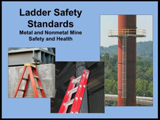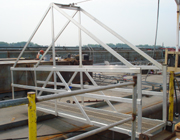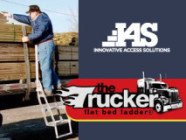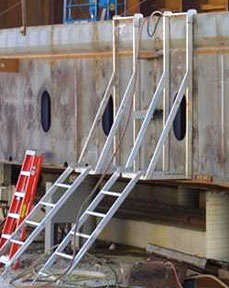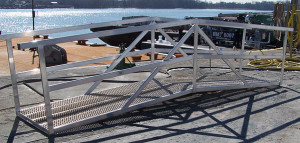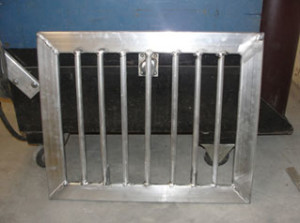The MSHA (Mining Safety & Health Administration) recently published an excellent summary of ladder safety standards for the mining industry. The MSHA was formed to ‘administer the provisions of the Federal Mine Safety and Health Act of 1977 (Mine Act). MSHA carries out the mandates of the Mine Act at all mining and mineral processing operations in the United States, regardless of size, number of employees, commodity mined, or method of extraction.’
The published document covers all topics and categories related to ladder safety training, from the basics of safe access requirements, requirements for each ladder category and special circumstances such as alternating tread and underground ladders. This blog post will summarize standards related to Fixed Ladders, Mobile Equipment Ladders, and the basics of Access Requirements, Ladder Construction and Maintenance. For complete access to this valuable MSHA resource, mining professionals are encouraged to download the Mining Ladder Safety Standards PDF.
Safe Access & Construction and Maintenance
The MSHA standards document provides a detailed summary of possible mining ladder safety citations complete with images of compliant and non-compliant ladders. In addition to common sense factors such as the condition and strength of a ladder, factors such as the height of the bottom rung, the width of the ladder uprights, ladders that require workers to climb over obstructions to mount or unmount, and other potential fall hazards are described. In some cases personal fall protection equipment such as lanyards and harnesses may also be required.
Fixed Ladders
Fixed ladders have been assigned highly detailed requirements specific to the application. In many cases, safety measures such as landings, backguards, and protection for openings at the upper level are required. To review these complex standards, we recommend reviewing the Mining Ladder Safety Standards presentation for details.
Mobile Equipment Ladders
“Fixed mobile equipment ladders must comply with applicable fixed ladder standards such as 30 CFR §§ 56/57.11005 and 30 CFR §§ 56/57.11017.”
The details provided in the MSHA ladder standards document are extended to include even standards for mobile equipment ladders. These ladders must be maintained the same as other ladders and when affixed to equipment, fall under the fixed ladder category. The uniqueness of mobile equipment fixed ladders leads to certain exemptions and standards that may also apply to walkways that provide access to operator cabs.
For information about designing custom ladder access solutions for your mining facility, contact Innovative Access Solutions, LLC.
